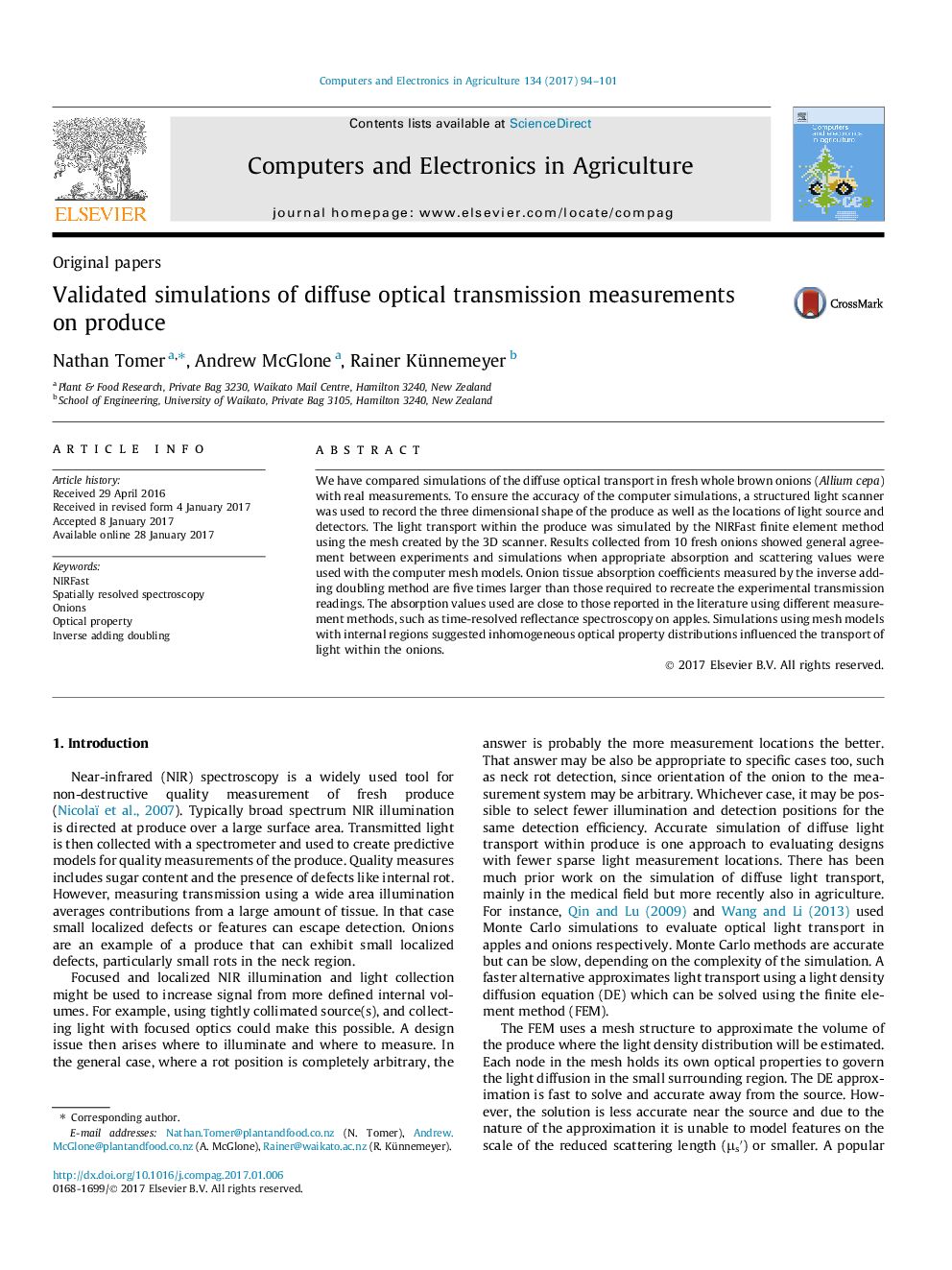| کد مقاله | کد نشریه | سال انتشار | مقاله انگلیسی | نسخه تمام متن |
|---|---|---|---|---|
| 6458879 | 1421114 | 2017 | 8 صفحه PDF | دانلود رایگان |
- Novel method of information capture for validation of light transport simulations.
- Optical absorption value from IAD method inconsistent with observed light attenuation.
- Internal optical properties of onions modelled well using physical boundaries.
- NIRFast is demonstrated as a fast FEM tool for light transport modelling of produce.
We have compared simulations of the diffuse optical transport in fresh whole brown onions (Allium cepa) with real measurements. To ensure the accuracy of the computer simulations, a structured light scanner was used to record the three dimensional shape of the produce as well as the locations of light source and detectors. The light transport within the produce was simulated by the NIRFast finite element method using the mesh created by the 3D scanner. Results collected from 10 fresh onions showed general agreement between experiments and simulations when appropriate absorption and scattering values were used with the computer mesh models. Onion tissue absorption coefficients measured by the inverse adding doubling method are five times larger than those required to recreate the experimental transmission readings. The absorption values used are close to those reported in the literature using different measurement methods, such as time-resolved reflectance spectroscopy on apples. Simulations using mesh models with internal regions suggested inhomogeneous optical property distributions influenced the transport of light within the onions.
Journal: Computers and Electronics in Agriculture - Volume 134, March 2017, Pages 94-101
